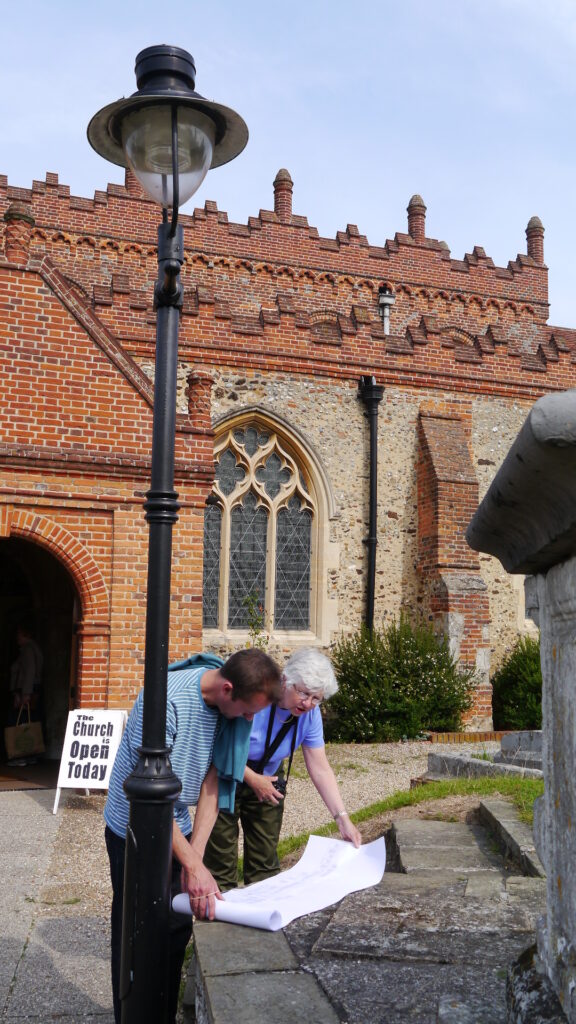When London accountant Henry Keene Smithers started to steal from his employer, he didn’t hold back. In 1858, he pleaded guilty of embezzling 1,450 pounds (about $62,500 pounds, or $113,000 Canadian, in today’s money) from the Commercial Dock Company. He was sentenced to six years in prison.
Henry was born in 1812 at Canterbury Place, Walford, Surrey, south of London.1 His father, also named Henry Keene Smithers, was a coal merchant and accountant; his mother, Charlotte Letitia Pittman, had roots in Antigua. Henry Keene junior was the second of the couple’s seven surviving children and older brother to my great-great grandfather, Charles Francis Smithers.
The Smithers family had been “non-conformists” for several generations, meaning they were members of the Congregational church. Henry and his father were both members of the Fishmongers Guild and had been admitted to the Freedom of the City of London, which gave them some traditional privileges.
It is unlikely that any of these factors led Henry into a life of crime and, although he pleaded guilty, he did not reveal his motives during the trial. On June 18, 1854 The Times described him as a “gentlemanly-looking man,” adding that the prisoner “had himself given information which led to the discovery of what had been going on, and he urged that this was a circumstance favourable to him.”
The company’s lawyer told the court that Henry had been stealing over a four-year period and that the actual sum he had embezzled was between 8,000 and 9,000 pounds. Henry’s lawyer tried to create some sympathy for his client by arguing that he had not been paid a salary commensurate with his responsibilities as the company’s secretary. He added there had been a great deal of illness in the accused’s family, and his daughter had died shortly before the trial.
Records show that Henry married Alice Lance in 1836, and the couple had six children, two of whom died young. In 1854, Alice died, aged 40. A year later, Henry married Louisa Lance (who may or may not have been related to Alice) and they had a daughter. Henry’s 12-year-old daughter Emma did die shortly before his court date.
Henry was likely imprisoned in London’s Millbank Prison. When Louisa and five children appeared in the 1861 census of England, she described herself as “wife” rather than head of the household, although Henry was not present, and gave her occupation as annuitant, indicating she had some income.
When Henry was released from prison, the family must have decided to start afresh. By 1870, Henry and Louisa and three children, two of whom were now grown up, were living in Brooklyn, NY, a city that was also home to brother Charles and his family. Henry told the census taker his occupation was professor.
Henry died in Brooklyn in 1874, age 62. His youngest daughter had died the previous year. Louisa returned to England, where she remained until her death in 1901, and Henry’s four surviving children from his first marriage also lived most of their lives in England.
Research Remarks My great-great grandfather Charles Francis Smithers, who immigrated to North America around 1847, grew up in Surrey, across the Thames River from central London. I had done a little research on his family, but since I was going to visit London this fall, I wanted to know more.
In the 1980s, a distant cousin wrote a privately published book about the Smithers, focusing mainly on family members in the United States during the late 19th and early 20th centuries. I started my research where she left off, but my real breakthrough came when I contacted Michael Smither in England.

Michael has been doing a one-name study (with three different spellings: Smither, Smythers and Smithers) for some 25 years, and he has posted information on more than 7,600 individuals on the Public Member Tree section of Ancestry. Only a few of those people are actually related to me, but Charles Francis Smithers’ grandparents, aunts and uncles, and even his great-great-grandfather are there.
I often ignore those public trees, but Michael posted the sources of his information, so that gave me confidence in his research. I contacted him by e-mail, we corresponded for several weeks, then agreed to meet near London. I gave him the information I had on the North American side of the family and he has gone out of his way to share his knowledge. In fact, this story is primarily based on his research, so thank you, Michael. The Henry Keene Smithers page is at http://trees.ancestry.com/tree/49405444/person/12982390169.
I love collaborative genealogy: it is fun to share your interests, and it can be very productive as each person brings his or her knowledge and perspectives to the task. I’ll be writing more stories about the Smithers this year.
When we met in Chelmsford, Essex, Michael Smither gave me my branch of the Smithers family tree.
Sources
- Ancestry.com. London, England, Freedom of the City Admission Papers, 1681-1925[database on-line]. Provo, UT, USA: Ancestry.com Operations, Inc., 2010. Original data: Freedom admissions papers, 1681 – 1925. London, England: London Metropolitan Archives. COL/CHD/FR/02.
